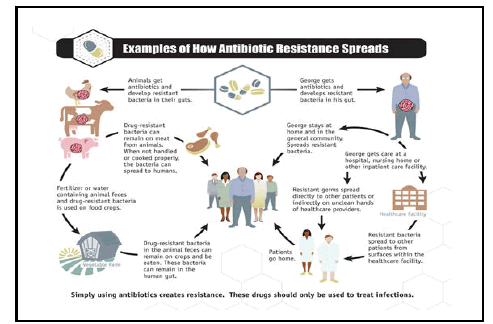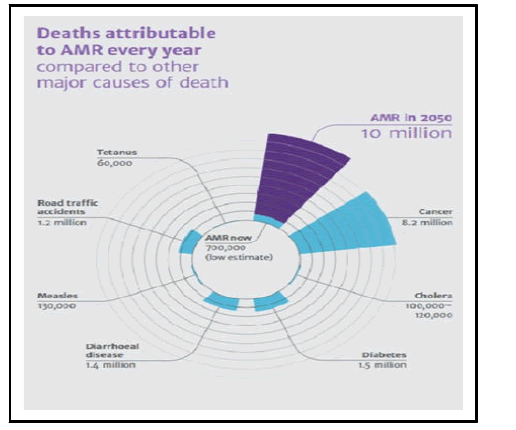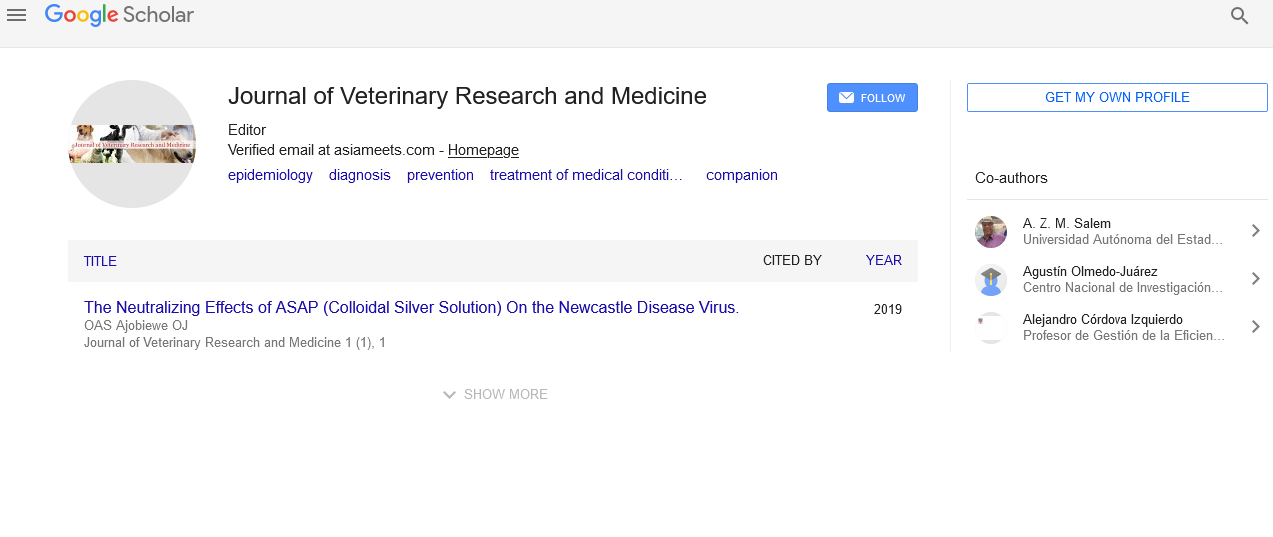Antimicrobial resistance (AMR): The silent pandemic
Received: 05-Jul-2022, Manuscript No. PULJVRP-22-5130; Editor assigned: 08-Jul-2022, Pre QC No. PULJVRP-22-5130(QC); Reviewed: 22-Jul-2022 QC No. PULJVRP-22-5130; Revised: 05-Sep-2022, Manuscript No. PULJVRP-22-5130(R); Published: 12-Sep-2022
Citation: Wyckliff N. Antimicrobial Resistance (AMR): The silent pandemic. J Vet Res Med 2022;4(3):1-2
This open-access article is distributed under the terms of the Creative Commons Attribution Non-Commercial License (CC BY-NC) (http://creativecommons.org/licenses/by-nc/4.0/), which permits reuse, distribution and reproduction of the article, provided that the original work is properly cited and the reuse is restricted to noncommercial purposes. For commercial reuse, contact reprints@pulsus.com
Abstract
The development of antimicrobials in the mid 20th century was a breakthrough in the field of medicine. These products have played a very significant role in treatment and prevention of infections. Despite their immense contribution, the ability of bacteria to develop resistant against these products is an emerging threat not only to the manufacturing of new antimicrobials but to the treatment of the common ailments in human and animal medicine.
Keywords
Antimicrobials; Antimicrobial resistance; Significant; Immense contribution; Infections
Introduction
Antimicrobial Resistance (AMR) is a serious global public health treat because of its effects like increasing levels of untreatable infections and prolonged hospitalization in an era where few antimicrobials are being manufactured. More than 50% of antimicrobials are used in animal husbandry for non-therapeutic purposes like prophylaxis and growth promotion. Antimicrobial Resistance (AMR) occurs when bacteria, parasites, viruses or fungi change to protect themselves from the effects of antimicrobial drugs designed to destroy them. This means previously effective antimicrobial drugs (e.g. antibiotics) used to treat or prevent infections may no longer work. Resistance is mainly a consequence of selective pressure created by antimicrobial use and the resistant genes are disseminated into different ecological compartments. Drug overuse/misuse or use of counterfeit products has been reported to be the main drivers of AMR development. The continuous and haphazard use of antimicrobials in both human and animal settings has led to environmental contaminations. Since AMR does not respect phylogenetic, geographical nor ecological borders, there is need for integrated (one health) approach in tackling it (Figure 1).
Description
Globally developing countries have been projected to be hit hard by ARM due to low income to the population and the resultant reliance on over the counter drugs. Similarly, the lack of resources to initiate and put in place tight surveillance and monitoring activities can complicate the scenario because then it is not known how, and which bacteria have developed resistance to what antimicrobials. The use of ineffective products and sharing of drugs in informal settlements confounded by dense population, poor sanitation and lack of affordable medical facilities have successfully driven AMR development in these settings. Modern medicine, especially surgery and cancer treatments, depends on effective antibiotics to minimize the risk of infection. Currently, antibiotics reduce post operative infection rates to below 2% and without effective antibiotics, this could increase to around 40% to 50%. Up to 30% of these patients could die from resistant bacterial infections. The risk of mortality without access to effective antibiotics may make some treatments and surgical procedures too risky to continue or perform. It is estimated that over 50 million deaths will attributable to AMR by 2050 (Figure 2).
Other scientists opinions
“The thoughtless person playing with penicillin treatment is morally responsible for the death of the man who succumbs to infection with the penicillin resistant organism.” Sir Alexander Flaming
• “AMR is outpacing the development of new countermeasures capable of thwarting infections in humans and animals.”
• President’s council of advisors on science and technology, USA “AMR is a global health emergency that will seriously jeopardize
• progress in modern medicine” Tedros Adhanom Ghebreyesus, 2017 “AMR, as I say again and again, is a slow-motion tsunami. It is a global crisis that must be managed with utmost urgency” Dr. Margaret Chan, 2016.
The way forward
For the world to tackle this gradual dangerous pandemic, antimicrobial stewardship concept should be adopted in all the cadres. Antimicrobial stewardship isn’t about “not using antimicrobials” but rather “identify that small group of patients who really need antibiotic treatment and then explain, reassure and educate the large group of patients who don’t”.
Some great minds have coined the abbreviation MINDME to try and really minimize development and spread of resistant bacteria.
• Microbiology guides therapy wherever possible.
• Indications should be evidence based.
• Narrowest spectrum required.
• Dosage appropriate to the site and the type of infection.
• Minimize duration of therapy.
• Ensure monotherapy in most cases.
If this can be done, AMR development could be slowed down and this can allow time to innovate more sustainable measures to counter it.
Conclusion
The concerns about consumption of “too many antimicrobials and biocides” and taking “too much hygiene” also need to be addressed during this pandemic due to their impacts on AMR, public health, and the environment.







